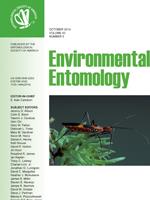Animals use different strategies to deal with changing environmental conditions. While standing and feeding on their host plant, aphids (Hemiptera: Aphididae) may be exposed to detrimental environmental perturbations, such as strong winds. If aphids are forcibly blown off the plant and spend time on the ground, they will face additional dangers by both ground-dwelling predators and detrimental soil temperature. It is therefore adaptive for aphids to behave in a way that lowers the risk of being removed from the plant. We observed that pea aphids (Acyrthosiphon pisum (Harris) ) display a specific crouched body posture, previously undescribed, which reduces their chance of being carried off from the plant by sudden winds. We exposed aphids in the laboratory to different cues indicative of a windy environment: wind, plant vibration, and visual stimuli. We found that aphids crouch in two situations: 1) reactively, when they are being pulled by a continuous gust of wind threatening to dislodge them. 2) Anticipatorily, when environmental cues, such as plant vibration or continuous movement near their host plant, may signify that sudden wind gusts are expected. Crouching aphids were less likely to be dislodged by a sudden air stream or plant vibration than were aphids that did not crouch. Crouching thus improves the aphids' chances of remaining on their host plant under unfavorable environmental conditions.
How to translate text using browser tools
1 October 2014
Anticipatory and Reactive Crouching of Pea Aphids in Response to Environmental Perturbations
Matan Ben-Ari,
Stav Talal,
Moshe Inbar
ACCESS THE FULL ARTICLE
It is not available for individual sale.
This article is only available to subscribers.
It is not available for individual sale.
It is not available for individual sale.

Environmental Entomology
Vol. 43 • No. 5
October 2014
Vol. 43 • No. 5
October 2014
Acyrthosiphon pisum
dropping response
environmental cue
incidental ingestion
wind




